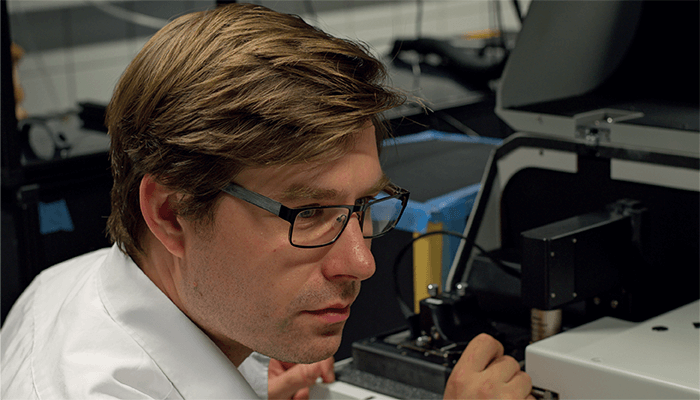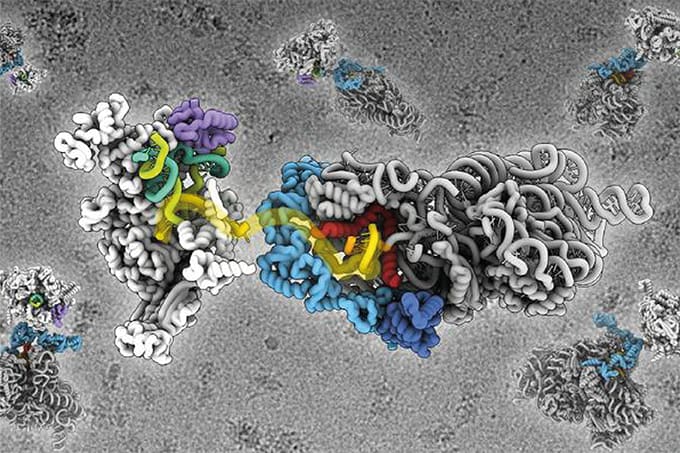
What is the single biggest challenge facing your field in 2022 – and beyond?
I mostly work with atomic force microscopy infrared (AFM-IR) – a technique that achieves mid-IR imaging at nanometer scale lateral resolution. We use it to perform molecular spectroscopy at the nanoscale. Applications range from microbiology and medicine to material science.
In AFM-IR – and really, in any kind of nanoscale analysis – we need to work towards common best practices for measurements that allow us to i) collect data reproducibly and artifact free, and ii) draw correct conclusions from them. AFM-IR enables us to get information that is hard (or even impossible) to obtain any other way. Hence, we need to take extra care that flashy results also are correct results before they are published.
Do you have any predictions for your field over the next decade?
When I started my PhD, I would use different versions of the phrase “AFM-IR is a novel technique” in all my manuscripts and grant applications. I still have the impulse to use it these days, but more than a decade has passed since its invention so it is no longer novel. The “Wild West” era of AFM-IR (when “I have measured X with AFM-IR for the first time” was enough for a manuscript to be published) is over.
But that’s not to say that the AFM-IR community isn’t highly innovative: every year, we see new measurement modes coming out and ever smaller samples (single molecule!) are being analyzed. However, if this technique is to be even more widespread, it needs to become a tool for routine analysis that can be operated in industrial quality control labs and by researchers from other fields. In those applications, having record-breaking sensitivity or one less nanometer of spatial resolution is not required. Rather, the results must be reliable and reproducible.
As a step towards this goal, we have recently published a guide on the analysis of polymeric materials with AFM-IR [reference, if possible]. Polymer science is facing the challenge of having to design materials that achieve high recycling rates to meet carbon reduction goals. AFM-IR can help them by allowing industrial and research scientists to see the chemical composition, contaminants, and phase distribution of polymers at the nanoscale. This information can in turn be used in the design of future recycled materials, with improved recycling efficiency and material quality.
Do you have any controversial opinions?
There are many ways in which we can make science more open, transparent, and reproducible. More and more journals are getting stricter about their requirements for data sharing and virtualization technologies (containerization) have made reproducible, open data processing very accessible.
Where do my opinions diverge from others in the field? Perhaps in my belief that black box hardware and closed-source software should have no place in science in general. That goes especially for analytical sciences, which often rely on complex commercial instruments. It is not uncommon for instruments to perform undocumented data preprocessing before outputting supposedly “raw” data. Being able to reproduce a result shouldn’t hinge on buying the same exact instrument from the same vendor.
What’s the secret of your early-career success?
I wasn’t that good at chemistry during my undergraduate degree – I lit my hair on fire in my first analytical chemistry lab course and had a hard time learning named reactions and tables of physico-chemical properties, which seemed to come easy to others. In my free time, I started looking into things that were more interesting and easier for me to grasp than chemistry: math, programming, and tinkering with electronics.
In the Austrian university system, switching from chemistry to another undergraduate curriculum would have meant losing most of my already accrued credits, therefore I had decided to finish as quickly as possible and move on to something else.
When I started looking for a thesis project, I found a group in the chemistry department who built their own optical sensors, needed programming for lab automation and data evaluation, and, overall, were using my hobbies for their actual research!
The group lead, Bernhard Lendl, offered me a project based on my enthusiasm alone. In his group, I was able to take on projects I found interesting, to spend long evenings coding or tinkering with valves and pumps and turning data into pretty plots. Instead of switching to a different field or dropping out of academia, I ended up going for a PhD in analytical chemistry. Here, Lendl again supported me by writing two joint proposals that enabled me to start working on nanoscale IR spectroscopy – an area that his group hadn’t been active in before.
The second, equally important factor in my success has been my partner. Academia is hard on relationships but it helps to have someone at my side who is also in academia and has the same long working hours and the same requirements for multiple year-long stays abroad. More importantly, it has been crucial for my career to have someone at my side who can give well founded critical feedback on ideas. My partner complements me in many ways – effective when I tend to go on flights of fancy, knowledgeable and experienced in chemistry, biochemistry, and process analytical technology, and happy to spend Sunday brunch brainstorming new ways to shoot lasers at samples!
Who would you invite to your dream dinner party?
Though not necessarily in the form of a dinner party, the tight-knit analytical chemistry/spectroscopy community has already allowed me to meet many of my heroes in person. During my first ICAVS conference – in Sonoma, California, US – I met several people that I had previously only known from the front covers of spectroscopy and analytical chemistry text books. Regularly getting to chat with very smart people at conferences is one of the most amazing things about academia.




